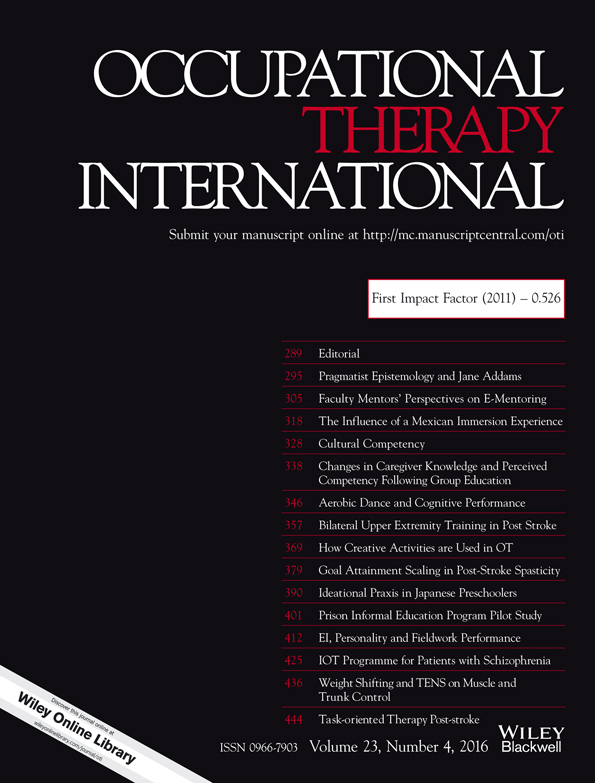
Supervised vs. unsupervised use of adaptive devices in elderly patients undergoing THR .
This report has been verified
by one or more authors of the
original publication.
The Effectiveness of Occupational Therapy Supervised Usage of Adaptive Devices on Functional Outcomes and Independence after Total Hip Replacement in Iranian Elderly: A Randomized Controlled Trial
Occup Ther Int. 2016 Jun;23(2):143-5340 patients with hip osteoarthritis undergoing total hip replacement were included in this trial to determine the effectiveness of occupation therapy supervised usage of adaptive devices. Patients were randomized to an experimental group that used adaptive devices in an organized and supervised manner or to a control group that used devices without supervision. Devices included abduction pillows, elevated toilet seats, reachers, and cushion seats. The purpose of this study was to determine whether supervision from an occupational therapist improved pain and disability outcomes, as well as hip muscle strength while using these adaptive devices. Outcomes were assessed up to 6 weeks postoperatively. Findings indicated significantly more favourable outcomes with supervised use of adaptive devices compared to unsupervised use in all pain, disability, independence, and hip muscle strength variables.
Unlock the Full ACE Report
You have access to 4 more FREE articles this month.
Click below to unlock and view this ACE Reports
Unlock Now
Critical appraisals of the latest, high-impact randomized controlled trials and systematic reviews in orthopaedics
Access to OrthoEvidence podcast content, including collaborations with the Journal of Bone and Joint Surgery, interviews with internationally recognized surgeons, and roundtable discussions on orthopaedic news and topics
Subscription to The Pulse, a twice-weekly evidence-based newsletter designed to help you make better clinical decisions
Exclusive access to original content articles, including in-house systematic reviews, and articles on health research methods and hot orthopaedic topics
































































